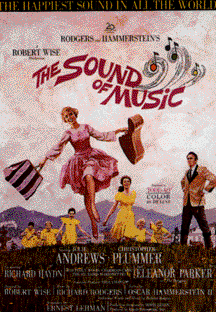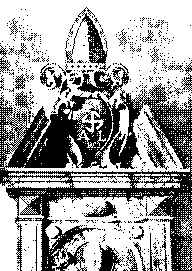|
restoring our biblical and constitutional foundations
|
The Sound of Music, the Swastika, and Human Freedom
Last night my wife and I enjoyed one of the greatest stage productions I have ever witnessed. The place was the Raleigh Performing Arts Theater, and the musical was The Sound of Music. The final collaboration between composer Richard Rodgers and lyricist Oscar Hammerstein, who passed away just nine months after the opening, The Sound of Music is, to my mind, the most “musical” of musicals ever made. Based on Maria Von Trapp’s autobiography The Story of the Trapp Family Singers, the original play was to have contained only actual music that had been sung by the Trapps in their concerts, plus one original song by Rodgers and Hammerstein. When the talented songwriting duo balked at this, however, they were allowed to contribute the entire score.
 The
1965 film version co-staring Julie Andrews and Christopher Plummer is
especially nostalgic for me, as I first saw it on a date with my then
wife-to-be. Last night’s stage production, however, was every bit as
memorable an experience—filled with laughter, tears, and of course, some of the most unforgettable music ever written. At the play’s end, as
the family wends its way up the mountain, you are hit squarely between the
eyes with the importance of freedom and of staying true to your ideals.
The
1965 film version co-staring Julie Andrews and Christopher Plummer is
especially nostalgic for me, as I first saw it on a date with my then
wife-to-be. Last night’s stage production, however, was every bit as
memorable an experience—filled with laughter, tears, and of course, some of the most unforgettable music ever written. At the play’s end, as
the family wends its way up the mountain, you are hit squarely between the
eyes with the importance of freedom and of staying true to your ideals.
Set in Austria in 1938, The Sound of Music tells the story of Maria Rainer, a free-spirited nun who is hired by Captain George Von Trapp to care for his seven children. Ignoring the Captain’s demands for strict child-rearing, Maria wins the children’s affection with her natural warmth and kindness. One night, the children sing at a dinner party given by the Captain to introduce his friends to his love interest, the Baroness Schraeder. Later that evening, as the Captain and Maria look into each other’s eyes while performing an Austrian folk dance, they realize they’ve fallen in love.
Confused by her new emotions, Maria returns to the Abbey, where she confesses her love for the Captain to the Mother Abbess, who encourages her to “climb every mountain” to find her true love. Maria returns to the Trapp villa, where eventually she and the Captain make plans to marry. While they are on their honeymoon, the Anschluss takes place and the Nazis occupy Austria. Meanwhile, Max Detweiler, a kindly uncle figure who is quite willing to compromise with the Nazis in order to save his own neck, has entered the children in the local music festival. The Captain returns to find he has been called back into military service by the German government. Appalled by the Nazis, he plots an escape and the family packs hastily. While fleeing the Trapp villa, the family is spotted by storm troopers. They explain that they are merely on the way to perform at the festival. The family appears and sings, planning to flee after the final number, “So Long, Farewell.” The Nazis discover their plans, but the von Trapps make a dramatic escape, hiding in the Abbey before escaping to freedom.
 Its
was during this final episode, with the family singing before the watchful
eye of the Nazis, that I was once again deeply impressed with the hideous
evil that lay behind the Captain’s desire to escape to freedom. There on
stage stood a giant Nazi flag—the dreaded
Swastika, symbol of national
power and of a nation gone mad. “Swastika,” of course, is derived from the Sanskrit
word svastikah, which means “being fortunate.” For centuries it was
a symbol of peace, laughter, joy, and good luck. In fact, a few years ago,
as voters in Nepal went to the polls, they expressed their choice by
stamping a swastika next to the name of the candidate of their preference.
Farmers in Tibet frequently place a swastika on their home doors lest evil
enter the place. A similar custom is followed by Irish farmers, where the
swastika placed in their doors is called a Brigit’s cross.
Its
was during this final episode, with the family singing before the watchful
eye of the Nazis, that I was once again deeply impressed with the hideous
evil that lay behind the Captain’s desire to escape to freedom. There on
stage stood a giant Nazi flag—the dreaded
Swastika, symbol of national
power and of a nation gone mad. “Swastika,” of course, is derived from the Sanskrit
word svastikah, which means “being fortunate.” For centuries it was
a symbol of peace, laughter, joy, and good luck. In fact, a few years ago,
as voters in Nepal went to the polls, they expressed their choice by
stamping a swastika next to the name of the candidate of their preference.
Farmers in Tibet frequently place a swastika on their home doors lest evil
enter the place. A similar custom is followed by Irish farmers, where the
swastika placed in their doors is called a Brigit’s cross.
Most historians agree that it was Hitler himself who
chose the swastika as a symbol of his movement. Hitler claimed that the
form in which the Nazis used the swastika was based on a design by
Dr.
Friedrich Krohn, a dentist from Starnberg who had belonged to several
völkisch groups, including the Germanen Order. Krohn submitted his design
of a flag that had been used at the founding meeting of his own party
local—a swastika against a black-white- red background. As Hitler noted in
Mein Kampf: “...a dentist from Starnberg did deliver a design that was
not bad after all, and, incidentally, was quite close to my own, having
only the one fault that a swastika with curved legs was composed into a
white disk.”![]()
Krohn knew that the Buddhist destroverse, or clockwise swastika symbolized good fortune and made his design accordingly, with the swastika’s legs pointing to the left. The majority of the Nazi leaders accepted Krohn’s design, but Hitler insisted on a sinistroverse or anti-clockwise one and changed the design accordingly.
Interestingly, Hitler’s first contact with the
swastika may have occurred while he was a young student with the
Benedictines at the Abbey of Lambach-am-Traum in upper Austria. At Lambach
Hitler saw the swastika engraved on the four corners of the monastery,
where it had been sculpted several years before following orders of the
abbot,
 Theodorich
Hagen. An erudite ecclesiastic, Father Hagen had studied astrology and the
occult sciences. In 1856 he made a trip to the Near East, visiting Persia,
Arabia, Turkey, and the Caucasus. Upon his return to Lambach in 1868 he
hired workers and cabinet makers whom he ordered to sculpt the swastika on
the four corners of the building and even on some religious objects. One
of the swastikas at Lambach is depicted in the photo on the left.
Theodorich
Hagen. An erudite ecclesiastic, Father Hagen had studied astrology and the
occult sciences. In 1856 he made a trip to the Near East, visiting Persia,
Arabia, Turkey, and the Caucasus. Upon his return to Lambach in 1868 he
hired workers and cabinet makers whom he ordered to sculpt the swastika on
the four corners of the building and even on some religious objects. One
of the swastikas at Lambach is depicted in the photo on the left.
When young Adolf Hitler became a student at Lambach, Father Hagen had already died, but the swastikas he ordered carved were still there. In 1920, when Hitler was appointed chief of propaganda for the National Socialist Party, he realized that the party needed a powerful symbol to identify it and distinguish it from rival groups. Since in Nazi theory the Aryans were the German’s ancestors, Hitler concluded that the swastika, which had been “eternally anti-Semitic” (as he put it), would be the perfect symbol for “the victory of the Aryan man.”
The swastika flag proved to be a dramatic symbol indeed, and produced a hypnotic effect on the masses. The Nazi flag was red with a black sinistroverse swastika, most often appearing lying at an angle to produce an even more dynamic illusion of circular movement. The swastika can be seen as the axis around which the whole Nazi movement revolved. The mystical pagan associations of the swastika are evident even in the SS altars that were used for weddings and child-naming ceremonies.
As I gazed on this hypnotic symbol of totalitarianism, I could not help but be reminded of the fight we are in today against despotism, and how important it is for all freedom-loving Americans to resolve to say no to tyranny and yes to freedom and the Constitution. Unlike the Max Detweilers of the world, who live by expediency and compromise instead of principle and honor, true biblical faith means that if I am tolerating something in my society that is unbiblical or unconstitutional, I will repent of that way of thinking and will attempt to do something about it!
Back in January I said that this is the year for action. I still believe that. With God’s help, let us all work harder than ever to bring about a rebirth of biblical values and constitutional liberty in this great country of ours, before it is too late.
July 20, 2003
David Alan Black is the editor of www.daveblackonline.com.